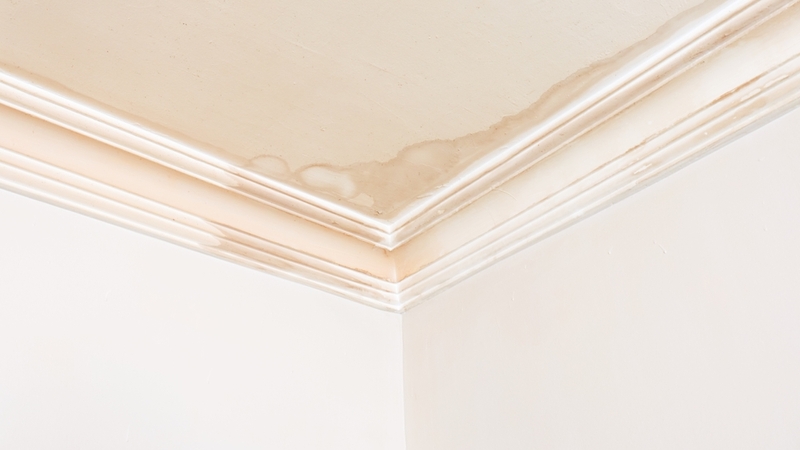Stains on the walls and an air quality that, in the long run, affects the health of the inhabitants: excessive humidity in the home can lead to mould growth, but it is possible to intervene with some tricks and solutions. Let's discover them together and see how the heating system also makes a difference.
How to remove moisture permanently?
The presence of moisture in certain rooms in the home is a completely natural phenomenon. It occurs mainly in spaces where the amount of water vapour is highest and where condensation is therefore possible, such as the bathroom and kitchen.
It becomes a problem when the level is too high because at that point the home environment would become unhealthy, with the proliferation of mould and other microorganisms that are dangerous especially for children and the elderly. Mould in the home is also an element that spoils the aesthetics of interior spaces with its dark stains appearing on the walls.
There are several reasons that contribute to the formation of damp in the home, some related to the building itself, others to bad habits.
- Water infiltration. Cracks in the walls allow rainwater to enter the walls, and so do blocked gutters or drains that encourage a build-up of water.
- Structural problems. Poor thermal insulation causes so-called thermal bridges, critical points that promote heat loss and the formation of mould.
- Building materials. Bricks and plaster, if not properly treated, easily absorb moisture from the outside, transmitting it to the inside.
- Capillary rising. The absence of good insulation allows moisture to rise from the ground through walls or foundations.
- Location. North-facing spaces or those with little direct sunlight retain moisture longer.
Remedying some of these factors, especially by improving the insulation of the house, helps to reduce excessive humidity levels and benefit from healthier spaces.
What is the best way to remove humidity?
There are other immediate measures to reduce humidity in the home, which often depend on daily habits.
One of the most effective remedies is air exchange. Opening the windows at different times of the day, perhaps taking advantage of a beautiful sunny day, activates natural ventilation that facilitates the evaporation of accumulated humidity.
This is an excellent solution especially for eliminating water vapour after taking a shower or cooking, considering that the bathroom and kitchen, as pointed out above, are the two rooms most exposed to a high concentration of humidity.
It is therefore necessary to avoid hanging laundry in the house, if one can take advantage of an outdoor space. If this is not the case, you can leave the window open when the laundry is hung out to recycle the air or use a dehumidifier if it is installed in the same room.
The air conditioner, which includes a dehumidifier mode, is in fact not only designed to manage the indoor climate in the summer season, but includes other capabilities. Just as it has a heat pump for the heating phase, it can similarly eliminate excess humidity by acting in dehumidification mode.
For the kitchen and bathroom, on the other hand, the installation of a hood and fan can be considered, which is indispensable if the bathroom is blind.

How to remove humidity from a room?
Dehumidifiers, but not only: the heating system can also be a very effective tool for reducing humidity in the home. An efficient, high-performance system makes rooms healthy.
To avoid the formation of mould, which, as we have seen, is a direct consequence of damp rooms, the temperature in the home must be between 66.2-68° F. However, when the heating is in operation in winter, the heat generated comes into contact with colder elements such as windows and walls, causing condensation due to the temperature range.
The deposition of condensation on the walls leads to their deterioration with the formation of mould. However, thanks to the advanced functions of a smart heating system, it is possible to constantly monitor the humidity level, which must be between 45% and 55%.
- Monitoring is done with a smart thermostat that transmits data directly to the mobile phone app and alerts the user if rooms are too dry or too humid.
- Smart thermostatic valves also help to remove humidity in the home.
- They make it easier to correctly set the temperature in individual rooms, depending on their use at different times of the day.
- The range thus remains within the optimal values and the supply schedule can always be changed with a simple click from a distance in the case of changing programmes for the inhabitants of the house.

How to absorb moisture at home?
In addition to natural ventilation by opening windows, there is controlled mechanical ventilation (CMV). This is a system designed for a constant and controlled exchange of air inside a building. The system manages the extraction of exhaust air and the entry of fresh air from outside, affecting the humidity level.
The advantages of controlled mechanical ventilation are manifold.
- As far as air quality is concerned, it removes dust and allergens, as well as odours.
- Replacement takes place without opening windows when the outside temperature is cold.
- It prevents the formation of condensation and thus humidity itself.
- This benefits the indoor comfort and health of the inhabitants.
For a specific action on house walls, there are also specific paints such as breathable paint, to be applied only after the mould has been removed: it is able to permeate vapour and moisture.
Then there are thermal insulating paints: they reduce the temperature difference between the air in the room and that in the wall, reducing the formation of condensation.










































